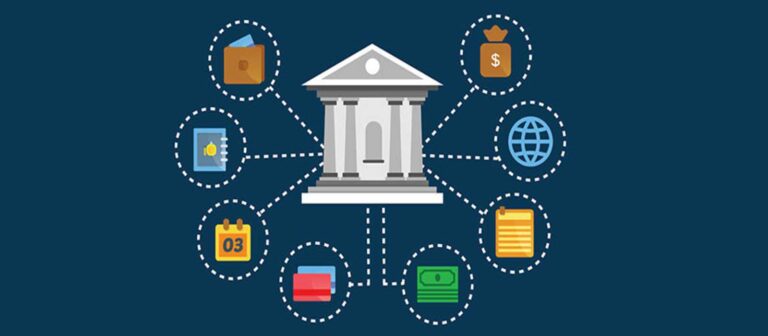Central Bank: Meaning, functions, examples and how it works

Central banks play a crucial role in managing the monetary policies and economy of a country. They are independent institutions responsible for implementing government monetary policies and regulating the supply of money in the economy.
What is a central bank?
A central bank is a public institution responsible for overseeing the monetary system of a country. It is an independent body that operates with a high degree of autonomy, free from political interference. The primary role of a central bank is to regulate the supply of money in the economy and ensure its stability.
Central banks are responsible for implementing government monetary policies and setting interest rates, which affect the cost of borrowing and can impact inflation. They also act as a lender of last resort, providing emergency funds to commercial banks in times of financial crisis to prevent the collapse of the banking system.
They also play a crucial role in promoting financial stability and overseeing the payment system. They act as a supervisor for commercial banks, setting standards for lending and ensuring that banks maintain adequate reserves to meet customer withdrawals. They also play a role in preventing fraud and money laundering by monitoring financial transactions.
Central banks are also custodians of a country’s foreign exchange reserves, which are used to maintain the value of the currency in the international market. They can also use these reserves to intervene in the foreign exchange market to stabilize the exchange rate of the currency.
How a central bank works
A central bank works by
- Implementing government monetary policies,
- Regulating the money supply
- Setting interest rates.
- maintaining the stability of the monetary system and
- Ensuring that the economy functions smoothly.
To regulate the money supply, a central bank can use a variety of tools, such as open market operations, reserve requirements, and discount window lending. Open market operations involve the central bank buying or selling government securities to add or drain liquidity from the banking system. Reserve requirements refer to the amount of funds that commercial banks must hold as reserves, which are set by the central bank. Discount window lending refers to the central bank’s provision of emergency funds to commercial banks in times of financial crisis.
Interest rates, which are set by the central bank, affect the cost of borrowing and can impact inflation. If the central bank wants to stimulate the economy, it can lower interest rates, which makes borrowing cheaper and encourages spending. If it wants to curb inflation, it can raise interest rates, which makes borrowing more expensive and slows down spending.
A central bank also acts as a lender of last resort, providing emergency funds to commercial banks in times of financial crisis. This helps to prevent the collapse of the banking system and maintains stability in the financial markets.
In addition, central banks play a crucial role in promoting financial stability and overseeing the payment system. They monitor financial transactions to prevent fraud and money laundering, and they set standards for lending to ensure that commercial banks maintain adequate reserves to meet customer withdrawals.
Main functions of a Central Bank
- The key functions of a central bank include regulating the money supply, setting interest rates, acting as a lender of last resort, and managing foreign exchange reserves. Additionally, central banks play a crucial role in promoting financial stability and overseeing the payment system.
- To regulate the money supply, central banks use a variety of tools, such as open market operations, reserve requirements, and discount window lending. By controlling the amount of money in circulation, central banks aim to maintain price stability and ensure the stability of the monetary system.
- Central banks also set interest rates, which affect the cost of borrowing and can impact inflation. Interest rate decisions are made by central banks to achieve their inflation target, and to promote economic growth or stabilize the economy during periods of financial turbulence.
- As a lender of last resort, central banks provide emergency funds to commercial banks in times of financial crisis. This helps to prevent the collapse of the banking system and maintain stability in the financial markets.
- Central banks are also responsible for managing a country’s foreign exchange reserves, which are used to maintain the value of the currency in the international market. They can intervene in the foreign exchange market to stabilize the exchange rate of the currency, and to maintain the value of their country’s currency relative to other currencies.
- Finally, central banks play a crucial role in promoting financial stability and overseeing the payment system. They act as supervisors for commercial banks, setting standards for lending and ensuring that banks maintain adequate reserves to meet customer withdrawals. They also monitor financial transactions to prevent fraud and money laundering.
The Independence of Central Banks
Central banks are typically independent institutions that operate with a high degree of autonomy, free from political interference. This independence is considered crucial for the effective implementation of monetary policies and the maintenance of price stability.
Central bank independence allows it to make decisions based on its assessment of the economic situation, rather than political considerations. This helps to ensure that monetary policy decisions are based on economic evidence and are not influenced by political considerations.
The independence of central banks also helps to prevent political pressures that may lead to inflationary policies or the printing of money to finance government spending. This helps to maintain price stability, which is crucial for the stability of the monetary system and the functioning of the economy.
In addition, central bank independence provides credibility and stability to monetary policy decisions. This helps to anchor expectations and reduces uncertainty, which can improve the effectiveness of monetary policy.
The independence of central banks is enshrined in law in many countries, and is often protected by strict rules and regulations. The governor of the central bank is typically appointed for a fixed term, and can only be removed for cause.
Examples of Central Banks
There are many central banks around the world, each serving the unique needs of their respective countries. Some of the most well-known central banks include the Federal Reserve System (Fed) in the United States, the European Central Bank (ECB) in the eurozone, and the Bank of Japan (BOJ).
The Fed, established in 1913, is the central bank of the United States. It implements monetary policies to promote stability, maximize employment, and achieve stable prices. The Fed also acts as a lender of last resort and supervises commercial banks to ensure the stability of the financial system.
The ECB was established in 1998 and is responsible for the monetary policy of the 19 countries in the eurozone. It aims to maintain price stability and support the overall objectives of the European Union. The ECB also plays a role in ensuring financial stability and supervising banks in the eurozone.
The BOJ was established in 1882 and is the central bank of Japan. Its primary objectives are to maintain price stability, ensure financial stability, and support the economic growth of Japan. The BOJ implements monetary policies, acts as a lender of last resort, and supervises commercial banks to ensure the stability of the financial system.
Conclusion
Central banks play a vital role in the economy by implementing monetary policies, regulating the money supply, setting interest rates, acting as a lender of last resort, and promoting financial stability.
Their independence helps ensure effective policy implementation and price stability. Understanding central banks is important for gaining a deeper understanding of the financial systems that support our modern world.
Don't miss a thing. Follow us on Telegram and Follow us on WhatsApp. If you love videos then also Subscribe to our YouTube Channel. We are on Twitter as MakeMoneyDotNG.





